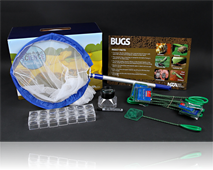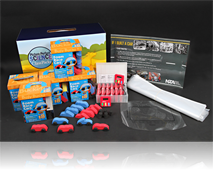All Middle School resources
NSTA Press Book
Project Earth Science: Physical Oceanography, Revised 2nd Edition
How well can your students— • Explain why ice floats? • Model ocean currents? • Predict tides? • Describe the proper clean-up of an oil spill? ...
By Alfredo L. Aretxabaleta, Gregg R. Brooks, Nancy W. West
Class Pack
Using Picture-Perfect Science Lessons, Expanded 2nd Edition in your classroom is easier than ever! NSTA’s ClassPacks, each sufficient for a class of 28 students, are lesson-specific collections of materials—an unmatched time-saver and a great dea...
Class Pack
*LAST CHANCE! This product is not eligible for return or exchange. All sales are final.* Using Picture-Perfect Science Lessons, Expanded 2nd Edition Lessons in your classroom is easier than ever! NSTA’s ClassPacks, each sufficient for a class...
NSTA Press Book
Companion Classroom Activities for Stop Faking It! Force and Motion
Never has it been so easy for educators to learn to teach physical science with confidence. Award-winning author Bill Robertson launched his bestselling Stop Faking It! series with Force and Motion—offering elementary and middle school teachers a j...
By William C. Robertson, Ph.D.
NSTA Press Book
Team Teaching Science: Success for All Learners
In Team Teaching Science, Ed Linz, Mary Jane Heater, and Lori A. Howard demonstrate the truth in the old adage “Two heads are better than one.” This guide for developing successful team-teaching partnerships that maximize student learning will h...
By Lori A. Howard, Ed Linz, Mary Jane Heater
NSTA Press Book
Even More Brain-Powered Science: Teaching and Learning With Discrepant Events
• How can water and a penny demonstrate the power of mathematics and molecular theory? • Do spelling and punctuation really matter to the human brain? ...
By Thomas O'Brien
NSTA Press Book
Project Earth Science: Astronomy, Revised 2nd Edition
How well can your students … • Illustrate the reason for Earth’s seasons? • Explain how far a light year is? • Simulate the phases of the Moon? • Describe the effects of greenhouse gases? • Connect astronomy to other Earth sys...
By Geoff Holt, Nancy W. West
NSTA Press Book
Project Earth Science: Geology, Revised 2nd Edition
How well can your students … • Explain the distribution of earthquakes? • Model volcanic eruptions? • Demonstrate plate motions and interactions? • Describe seafloor changes? • Think in terms of geologic time? ...
By Paul D. Fullagar, Nancy W. West
NSTA Press Book
Yet More Everyday Science Mysteries: Stories for Inquiry-Based Science Teaching
In the fourth book of this award-winning series, author Richard Konicek-Moran explores 15 new mysteries children and adults encounter in their daily lives. Relating the mysteries to experiences familiar to elementary and middle school students—Part...
By Richard Konicek-Moran
NSTA Press Book
Uncovering Student Ideas in Life Science, Volume 1: 25 New Formative Assessment Probes
Winner of the Distinguished Achievement Award from Association of Educational Publishers!Author Page Keeley continues to provide K–12 teachers with her highly usable and popular formula for uncovering and addressing the preconceptions that students...
By Page Keeley




